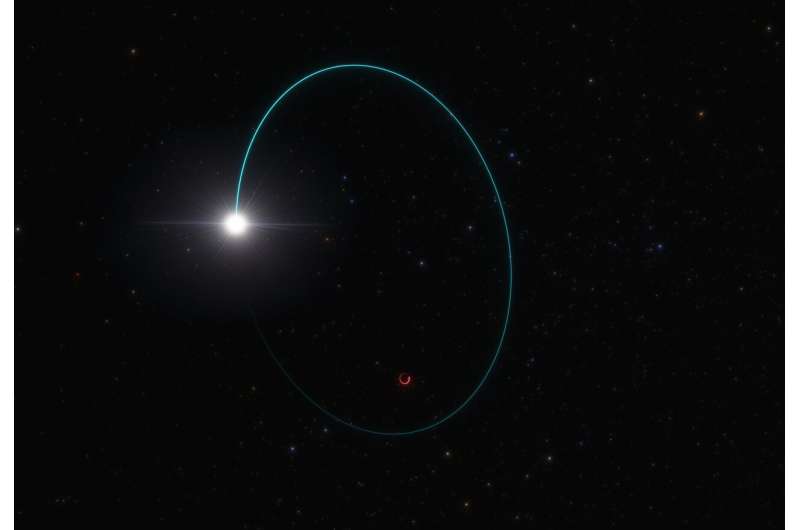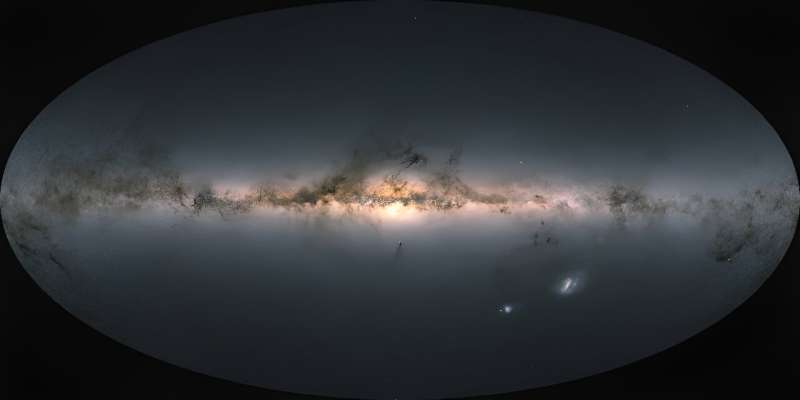A stellar black hole has been discovered in the Milky Way.
Astronomers have discovered the largest stellar black hole ever discovered in the Milky Way, with a mass 33 times that of the Sun, according to a study published Tuesday.
Pasquale Panuzzo, an astronomer at the Center National de la Recherche Scientifique (CNRS) at the Observatory in Paris, told AFP that the black hole, named Gaia BH3, was found in data collected by the European Space Agency’s Gaia mission. Discovered by accident.
Gaia is dedicated to mapping the Milky Way, located at BH3 Aquilae, 2,000 light-years from Earth.
Because the Gaia telescope can give the precise position of stars in the sky, astronomers are able to describe their orbits and measure 33 times the mass of a star’s invisible companion.
Further observations with ground-based telescopes confirmed that this is a black hole with a mass far greater than the existing stellar black holes in the Milky Way.

Astronomers have discovered the most massive stellar black hole in the Milky Way, thanks to the wobbling motion it causes in its companion star. This artist’s impression shows the orbits of the star and the black hole known as Gaia BH3 around their common center of mass. The European Space Agency’s Gaia mission has measured this wobble for several years. Additional data from other telescopes, including ESO’s Very Large Telescope in Chile, confirmed that the black hole was 33 times more massive than the Sun. The chemical composition of the companion star suggests that the black hole formed after the collapse of a massive star with few heavy elements or metals, as theory predicts. Image source: ESO/L.Calada
“No one expected to find a hitherto undiscovered massive black hole lurking nearby,” Panuzzo said in a press release. “This is a once-in-a-lifetime discovery.”
Stellar black holes were discovered when scientists discovered a “wobble” motion in a companion star orbiting it.
“We can see a star slightly smaller than the Sun (about 75 percent of its mass) and brighter, orbiting an invisible companion,” Panuzzo said.
Stellar black holes are formed by the collapse of massive stars at the end of their lives and are smaller than supermassive black holes, the formation of which is still unknown.
Such giant stars have been discovered in distant galaxies through gravitational waves.
But “never with us,” Panuzzo said.
BH3 is a “dormant” black hole, too far away from its companion star to strip away its material, and therefore does not emit X-rays, making it difficult to detect.
The Gaia telescope discovered the first two inactive black holes in the Milky Way (Gaia BH1 and Gaia BH2).
Gaia has been orbiting 1.5 million kilometers from Earth for the past 10 years and in 2022 provided 3D maps of the positions and movements of more than 1.8 billion stars.
More information:
A dormant 33 solar mass black hole discovered in pre-release Gaia astrometry, Astronomy and Astrophysics (2024). DOI: 10.1051/0004-6361/202449763
2024 AFP
citation: Astronomers discover the largest black hole in the Milky Way: Study (2024, April 20) Retrieved April 20, 2024 https://phys.org/news/2024-04-astronomomers-largest-black-hole- milky.html
This document is protected by copyright. No part may be reproduced without written permission except in the interests of fair dealing for private study or research purposes. Content is for reference only.
#Astronomers #discover #Milky #Ways #largest #black #hole #study
Image Source : phys.org
